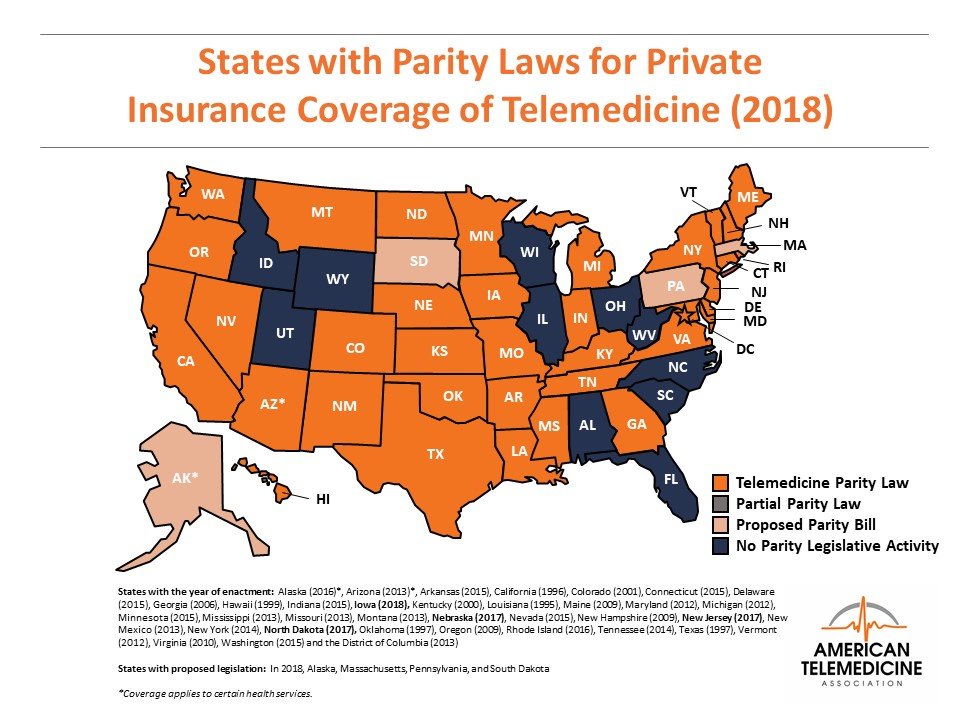Who Can Benefit from Telepsychotherapy and Telepsychiatry?
Modern technology is making it easier than ever to access mental health care services. More and more people are turning to telepsychotherapy and telepsychiatry as primary or supplemental ways to get mental health treatment from the comfort of their homes. Some people use technology based psychotherapy and psychiatry due to lack of access to in person care in their areas, others use it to maintain continuity of treatment after they move, and others find that the remote video format makes it easier to open up and connect.
If you are considering technology based health services, there are specific personal characteristics and mental health conditions or symptoms that tend to work better than others with the format of telepsychotherapy.
Bridging the Distance
The considerable stigma that surrounds mental health conditions and treatments in many areas of the US and around the globe has the unfortunate side effect of creating shortages of psychiatrists and psychotherapists in these areas. For those who find themselves with limited access to providers, telepsychiatry and/ or telepsychotherapy can be a great option for establishing mental health care. Often this is a good option for people who live in rural areas or outside of the country, perhaps somewhere where they would otherwise be unable to locate a provider that would understand their language and culture.
With access to wifi, whether you are traveling or living in a different area of the country altogether, you can easily maintain care with your psychotherapist. I work in Brooklyn, NY and have been practicing telepsychiatry for several years now to allow my patients who travel to have consistent care and continue psychotherapy and treatment. I don’t see new patients remotely at this time, as I do see the importance of at least some in- person visits. Because New Yorkers move a lot, having the option to continue care after moving even for a few visits until they settle in at their new location can reduces the stress of moving.
Increasing Accessibility
For some people, it is difficult to access therapy because of mobility issues. Someone facing a chronic illness or disability might find traveling to a therapist or psychiatrist’s office a real barrier to obtaining services. For example, if you are battling cancer and are immunocompromised you may be unable to leave the safety of your home environment. Fortunately, now with telemental health services, you can easily and safely access support and treatment from the comfort of your home.
Other people may be unable to access services due to busy or uneven schedules. Many professionals work long hours and cannot afford the travel time it might take to reach therapy. By eliminating the travel and making therapy just a few clicks away on the phone or internet, barriers to accessing services are reduced. Busy mothers and caregivers, who may need support in caregiving or want to address their own mental health issues could also benefit from the remote therapy option rather than not getting any help at all.
Better Client Care
Some mental health conditions can make starting treatment difficult as the condition makes it difficult to travel to a therapist’s office to start the process of getting better. Three examples are Obsessive Compulsive Disorder, Social Anxiety Disorder and Agoraphobia, which at their worst can prevent a person from being able to leave their home.
The symptoms of these conditions often prevent getting into treatment. However, with telepsychotherapy services, a person with OCD, Agoraphobia or Social Anxiety can start the process of therapy while at home. In time, as your condition improves, you may be able to then take the step of journeying to a provider’s office and meeting in-person to continue the therapy work.
Many mental health conditions can benefit from work in between the sessions in the therapist’s office. People with severe Anxiety and Depression might be best helped by Cognitive Behavioral Therapy, which involves learning to challenge and change unhelpful thoughts and behaviors. Technology can be used through videoconference and email check-ins to help clients build and use new coping skills.
People who have problems with emotional dysregulation and who may have been diagnosed with Borderline Personality Disorder, typically benefit from Dialectical Behavior Therapy. This approach, when done well, involves check-ins throughout the week and access to your therapist during crisis situations. Using technology through video, email, and texting can make these check-ins possible.
Final Recommendations
If you decide to seek telepsychotherapy or telepsychiatry, you want to make sure that your provider is trained and skilled in not just mental health treatment, but also in using remote formats. You can ask your potential provider about their experience and comfort with using technology in care. You may also want to check in with your insurance provider to make sure that telemedicine sessions are covered under your plan. While many states have laws in place mandating that health insurance companies cover these services, many states do not. You can refer to the map below to check the status of telemedicine laws in your state.



